- Archiving a metric: the metric will no longer be computed, but its history will be retained for your record. Use this for when a metric is no longer relevant, but you still wish to maintain the history of it. Use case example: you can archive older versions of a metric that continues to evolve so you have a record of how the metric has evolved over time.
- Deleting a metric: the metric will be removed from Statsig completely, including its history. Use this for when you’ve made a mistake, logged or imported an irrelevant metric, or created a more accurate version of a metric. Use case examples include incorrect definition, incorrect name, duplicate metric that you don’t want to confuse others with.
Archiving Metrics
Archiving a Metric
There are two ways to archive a metric:- In your Metric Catalog, select the metric(s) you want to archive to see a toolbar of options appear to Archive, Compare, or Tag. Select the Archive icon.

- In the Metrics Detail View page, select the ”…” in the upper right-hand corner, and select Archive.
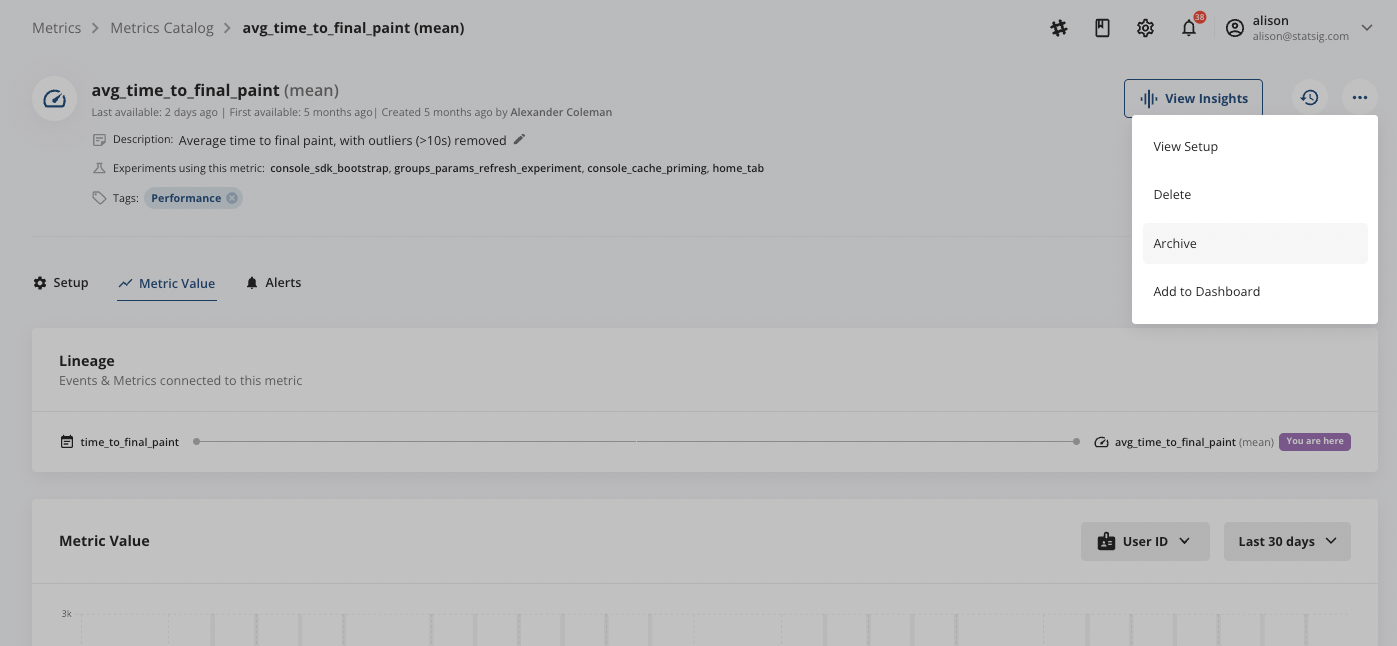
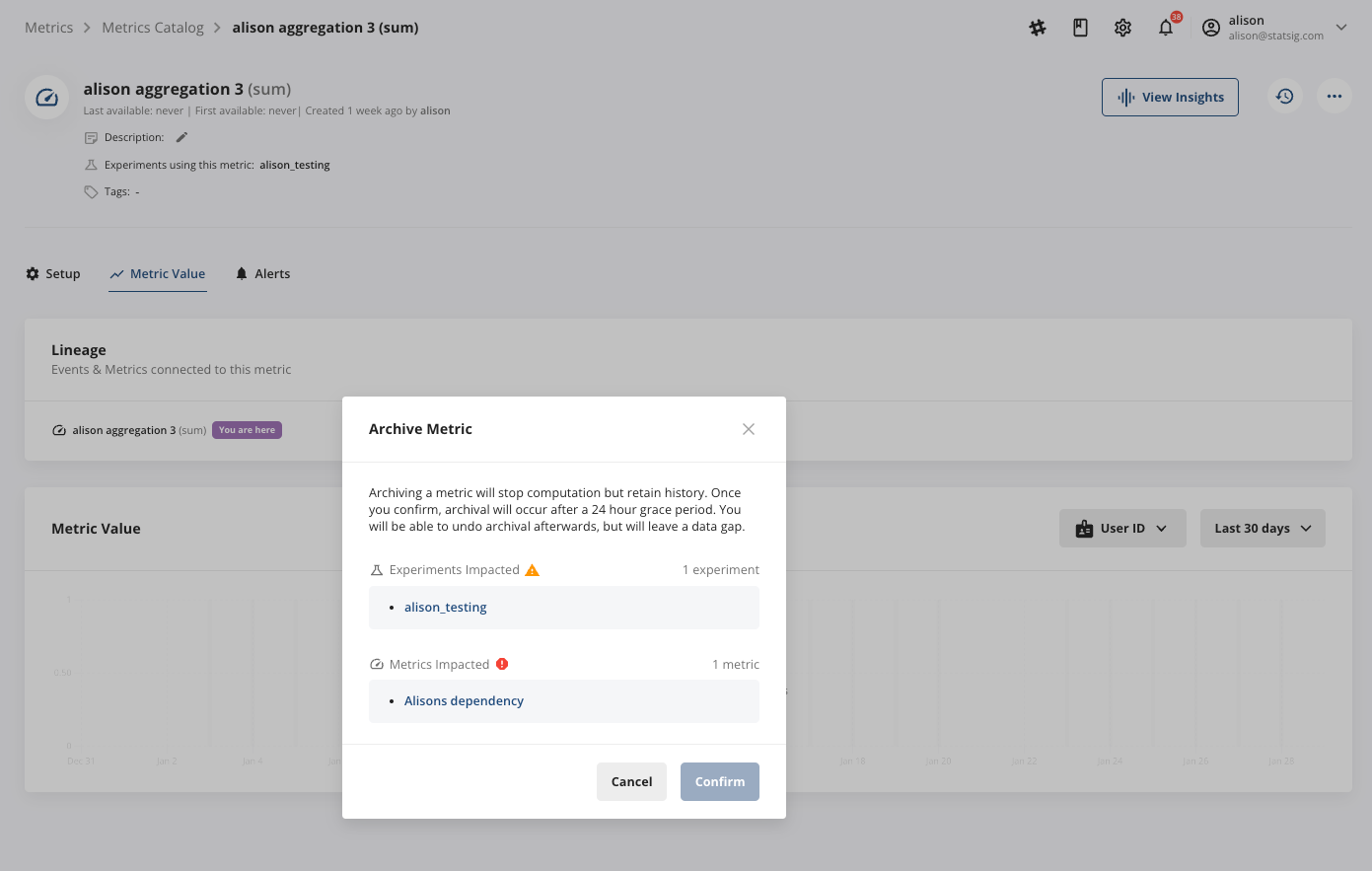
Implications of Archiving a Metric
As soon as the Archive button is clicked,- 24-hour grace period will start
- Owners of Experiments and Gates using this metric will receive an email notification to be notified of potential impact upstream
- Archived metrics will no longer be computed (when the 24-hour grace period ends).
- Archived metrics will not show up in your Metric Catalog search. To access all archived metrics, go to the last page(s) of your Metrics Catalog.
- Archived metrics will be removed from Pulse, including any time the archived metric has been added to the Scorecard of an experiment or the Monitoring Metrics section of a Feature Gate
Unarchiving a Metric
If you mistakenly archived a metric you can undo your Archival.- During the 24-hour grace period: Click “undo” on the archival banner at the top of the Metrics Detail View page. Since you Unarchived before the grace period ended (when the metric is no longer computed), this will restore the metric to both your Metrics Catalog as well as any experiment results that include the metric.

- After the 24-hour grace period: Either a) go to the last few pages of your Metrics Catalog, select the archived metric(s) you want to Unarchive to see a toolbar of options appear, and select the Unarchive icon OR b) in the Metrics Detail View page of an archived metric, select “Unarchive” in the banner indicating metric’s archival

Auto-Archival
To combat metric clutter, Statsig offers a default auto-archival feature that cleans up metrics that have not been in-use for at least 60 days. Metric creators and admins will get a warning about a week before archival happens, at which time they can either choose to extend the metric for another 60 days or mark it as permanent. The entire process is outlined below: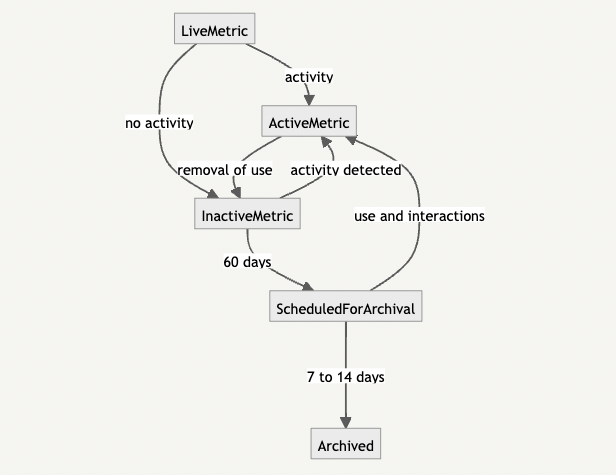
How do we measure activity?
Statsig counts the number of times the custom metric is used in one or more of the following components:- Scorecard: Used in experiments, pulse reports, holdouts, etc.
- Dashboards: Used to build dashboards and other analytical assets
- Other Metrics: Used to calculate other composite metrics

How to Pause / Stop Auto-Archiving
Any tracked action above (adding it to a scorecard, etc) will also take the metric out of the archival queue. Outside of that, if you want to pause the archival process, you may simply extend the metric for another 60 days. We also give you an option to mark it as permanent, which takes it out of the auto-archival process entirely. We recommend this only for the most important and widely reused metrics.

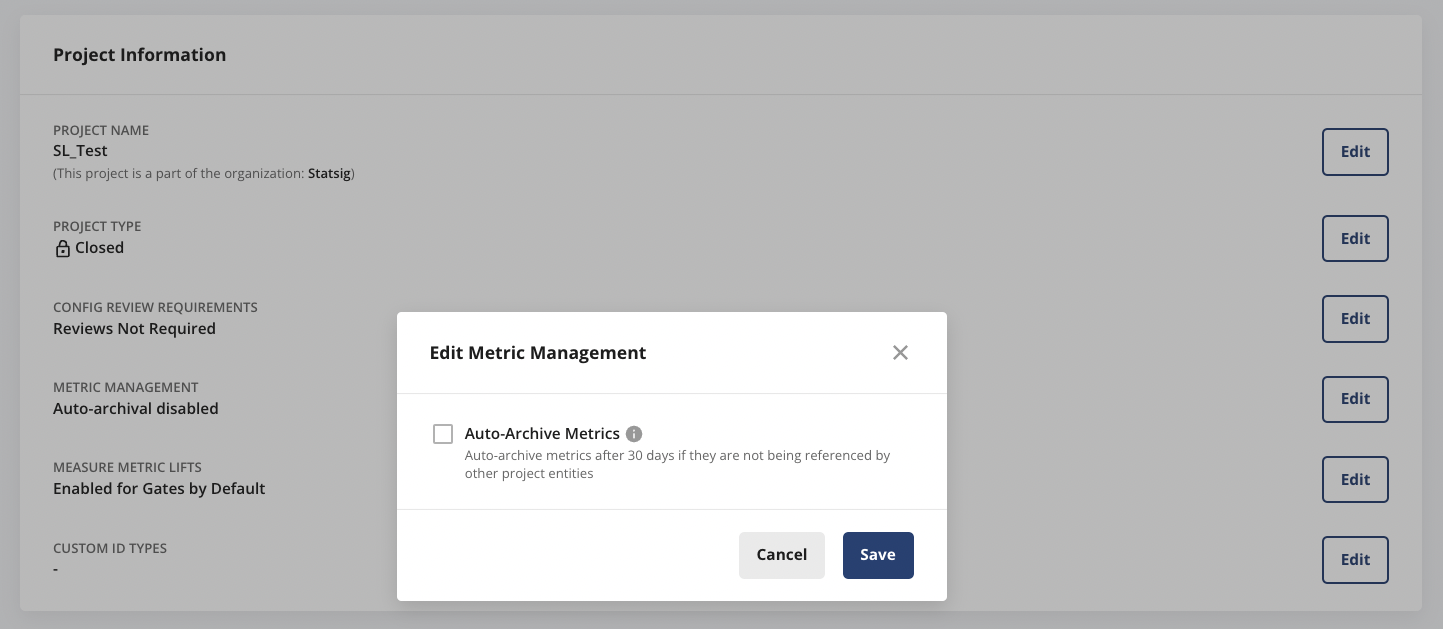
Deleting Metrics
Deleting a Metric
To delete a metric, go the Metrics Detail View page of a metric you wish to delete, select the ”…” in the upper right-hand corner, and select Delete.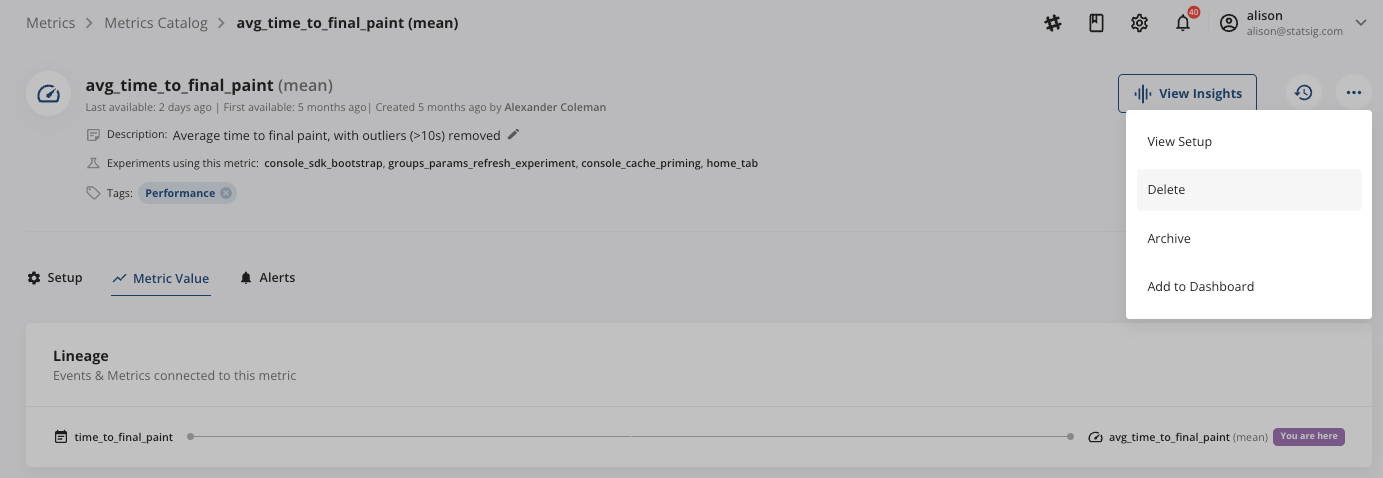
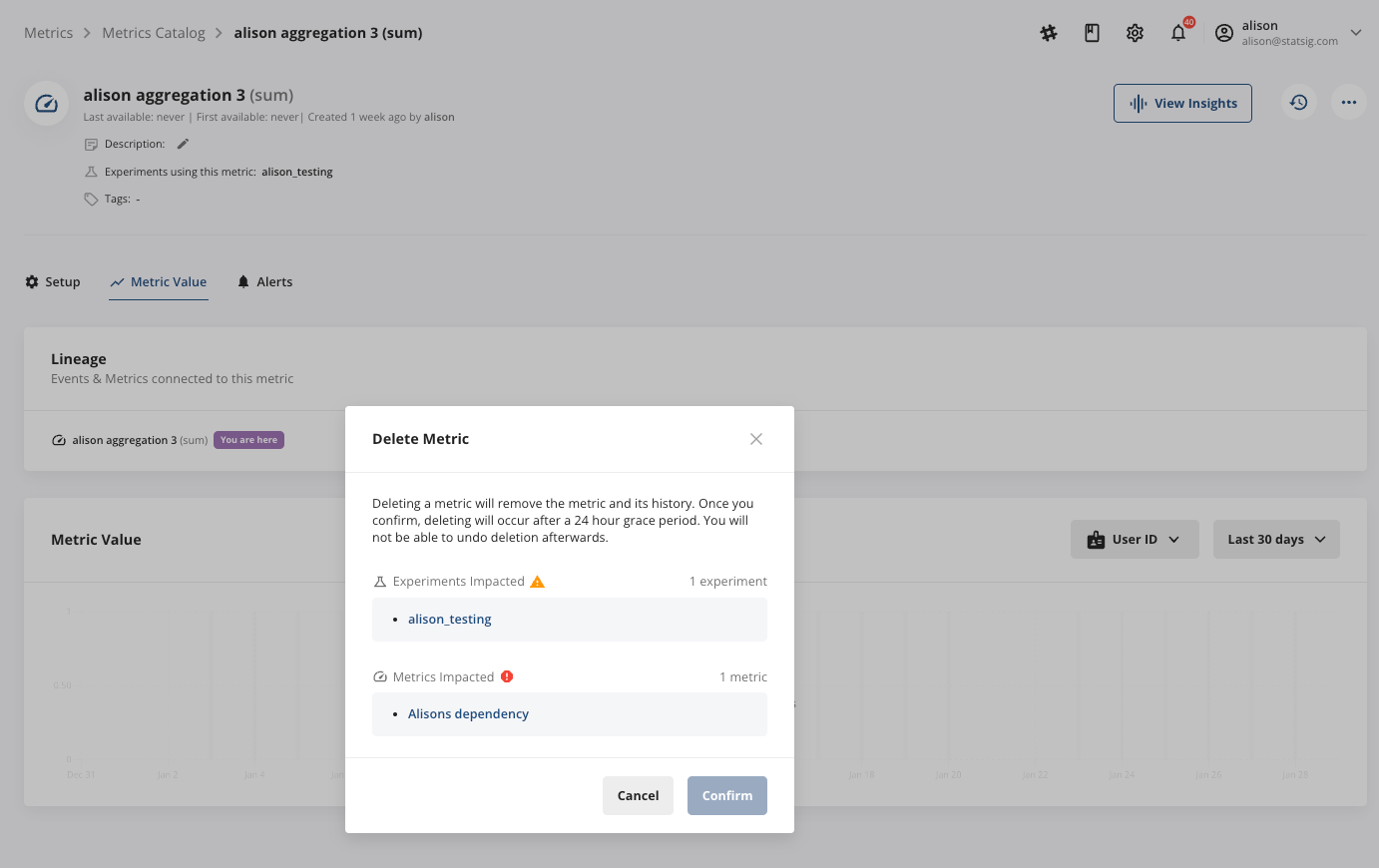

Implications of Deleting a Metric
As soon as Delete button is clicked- 24-hour grace period will start
- Owners of Experiments and Gates using this metric will receive an email notification to be notified of potential impact upstream
- Deleted metrics and their history will be removed from Statsig, and cannot be restored.
- Deleted metrics will be removed from Pulse, including any time the deleted metric has been added to the Scorecard of an experiment or the Monitoring Metrics section of a Feature Gate

